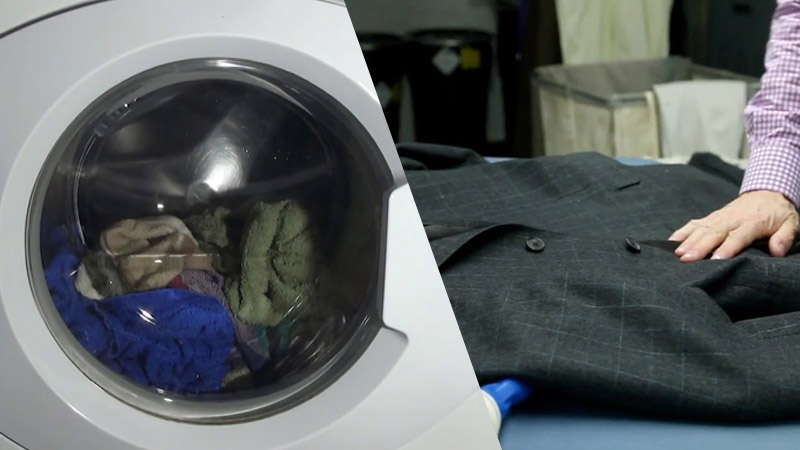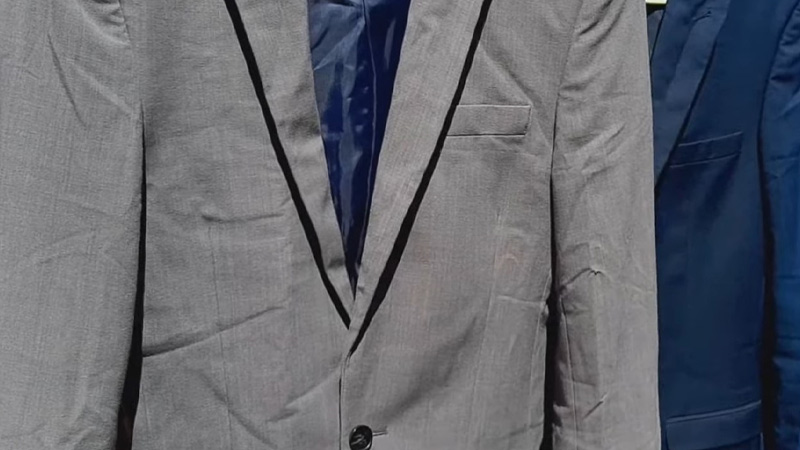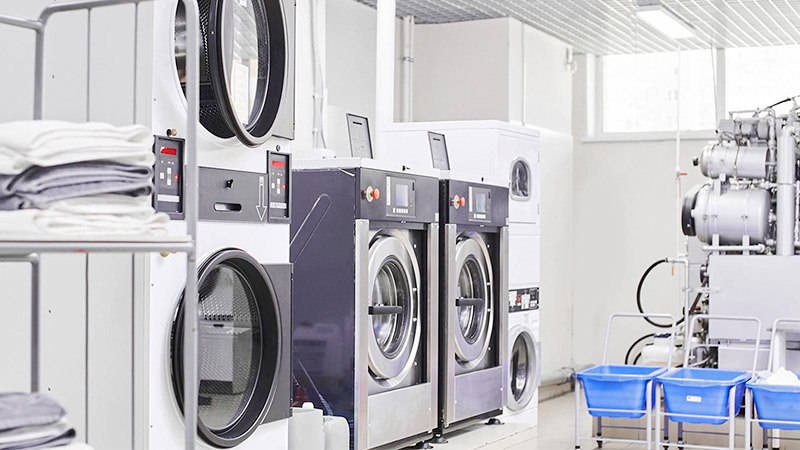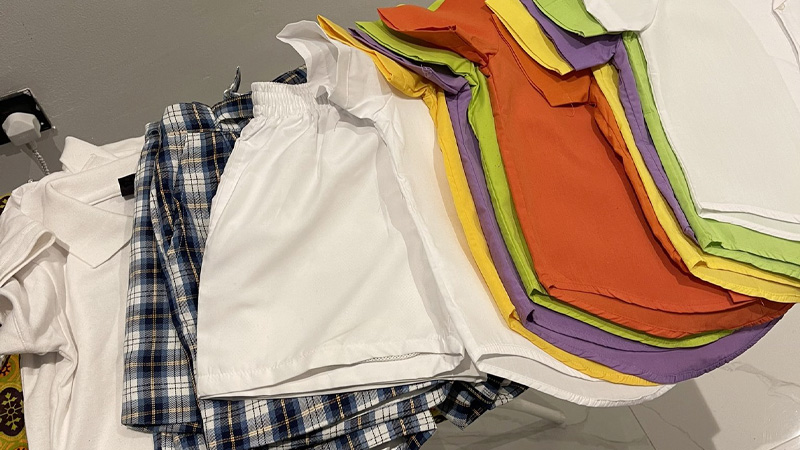When it comes to caring for our clothing, the choices we make can significantly impact their longevity and appearance. Washing and dry cleaning are two primary methods we rely on to keep our garments clean and fresh.
This guide will delve into washing vs. dry cleaning, helping you make informed decisions for your wardrobe.
We will explore the science behind these processes, discuss the types of fabrics that benefit from one method, and consider factors like cost and environmental impact.
Whether you’re dealing with everyday wear, delicate fabrics, or special occasion attire, knowing the right approach can extend the life of your clothing and keep you looking your best.
Join us as we uncover the secrets of Washing vs. Dry Cleaning, and empower yourself to make the right choice for your cherished garments.

Washing vs. Dry Cleaning: In-Depth Comparison
We often choose between washing and dry cleaning when cleaning our clothing and fabrics. While both methods aim to remove dirt, stains, and odors, they differ significantly in how they achieve these goals.
Understanding the key differences between washing and dry cleaning can help you make informed decisions about caring for your garments.
Washing
Water-Based Cleaning
As the name suggests, washing primarily relies on water as its cleaning agent. Whether using a washing machine or hand-washing, water is the main solvent that dissolves dirt and stains. Detergents are added to enhance cleaning by breaking down oils and grime.
Agitation
In a washing machine, garments are agitated against each other, creating friction that helps remove dirt. Hand-washing involves gentle scrubbing or kneading that won’t damage the fabric.
Suitable Fabrics
Washing is generally suitable for various fabrics, including cotton, linen, polyester, and most synthetic blends. It’s the go-to method for everyday clothing, casual wear, and items with care labels that recommend machine or hand washing.
Home vs. Professional
Washing can be done at home with a washing machine or by hand, making it a convenient and cost-effective option for regular maintenance. However, for large or specialized loads, professional laundry services are available.
Dry Cleaning

Solvent-Based Cleaning
Dry cleaning, in contrast, uses a chemical solvent, typically perchloroethylene (perc), to clean garments. This solvent is highly effective at removing stains and odors without using water.
Gentle Treatment
Dry cleaning is a gentle process. Garments are immersed in the solvent and gently agitated, which minimizes the risk of damage to delicate fabrics and embellishments.
Suitable Fabrics
Dry cleaning is preferred for delicate fabrics like silk, wool, cashmere, and garments with intricate details or those prone to shrinking, such as tailored suits. It’s also essential for items with care labels that specify “dry clean only.”
Professional Service

Professional dry cleaners almost exclusively perform dry cleaning. The equipment and chemicals used require specialized training and equipment. Customers drop off their items, and experts handle the cleaning process.
Key Differences
Water vs. Solvent
The primary distinction between the two methods is using water in washing and chemical solvents in dry cleaning. This difference significantly impacts fabric care, stain removal, and garment longevity.
Agitation Intensity
Washing involves more vigorous agitation, which can be harsh on delicate fabrics. Dry cleaning offers a gentler approach, reducing the risk of wear and tear or other types of damage.
Fabric Suitability
The fabric of the garment should guide your choice. Washing suits everyday wear and sturdy fabrics, while dry cleaning is essential for delicate, high-end, and specialty items.
Convenience
Washing can be done at home, offering convenience and cost savings. Dry cleaning requires visiting a professional cleaner, which may be less convenient but necessary for specific items.
Stain Removal
Dry cleaning removes tough stains like oil-based marks, ink, or grease. Washing may struggle with certain stains but can be effective with others, such as food or sweat.
In summary, choosing between washing and dry cleaning depends on several factors, including the fabric type, garment care labels, and convenience.
Understanding these differences empowers you to make the right choice for each item in your wardrobe, ensuring that your clothes remain clean, fresh, and in excellent condition for years to come.
When to Choose Washing?

Washing is a versatile and commonly used method for cleaning garments and fabrics. It’s the go-to choice for many of our everyday clothing items. Here are situations when choosing washing is the right decision:
Everyday Wear
Washing is ideal for everyday clothing such as t-shirts, jeans, casual dresses, and undergarments. These garments are typically made of durable materials like cotton or synthetic blends, which can withstand water-based cleaning.
Regular Maintenance
Wash is practical and cost-effective for routine cleaning and upkeep of your wardrobe. You can easily manage this process at home using a washing machine, saving time and money on professional cleaning services.
Clothing Care Labels
Always check the care labels on your clothing. If the label specifies “machine washable” or “hand wash,” it indicates that washing is recommended. Following care instructions ensure you maintain the garment’s quality.
Stains
Washing can remove common stains like food, dirt, sweat, and water-based marks. Pre-treat stains with appropriate stain removers or detergents to enhance stain removal during the washing cycle.
Breathable Fabrics
Garments made from breathable materials like cotton or linen benefit from washing as it helps maintain their freshness and comfort. Washing allows these fabrics to retain their natural properties.
Environmental Considerations
Washing, especially in cold water and with eco-friendly detergents, can be a more environmentally friendly option than dry cleaning, which involves chemical solvents. If sustainability is a priority, choose washing and explore green laundry practices.
Cost Savings
Washing your clothes at home can save you money in the long run, as you avoid the costs of professional dry cleaning services. Additionally, energy-efficient washing machines can reduce water and electricity consumption.
Convenience
Washing offers convenience, especially for items that require frequent cleaning. You can schedule your laundry tasks to fit your routine without needing drop-offs and pickups at a dry cleaning establishment.
While washing is a versatile and practical choice for many garments, it’s essential to remember that not all fabrics and clothing items suit this method.
Delicate materials like silk, wool, and garments with intricate details may require specialized dry cleaning care to maintain their integrity.
Always consider the fabric type, care labels, and the specific cleaning needs of each item in your wardrobe when deciding between washing and dry cleaning.
When to Choose Dry Cleaning?

Dry cleaning is a specialized method that relies on chemical solvents rather than water. It is preferred for certain fabrics and garments requiring gentle treatment and specialized care. Here are situations when choosing dry cleaning is the right decision:
Delicate Fabrics
Dry cleaning is essential for delicate fabrics such as silk, wool, cashmere, and satin. These materials can be easily damaged or distorted when exposed to water and agitation. Dry cleaning ensures their preservation.
Structured Garments
Tailored suits, blazers, and structured clothing with linings and shoulder pads benefit from dry cleaning. The process maintains the garment’s shape and structure, preventing deformation during washing.
Garments with Embellishments
Clothing adorned with beads, sequins, embroidery, or other delicate embellishments should be dry-cleaned. The solvent-based method is gentle on these details, reducing the risk of damage.
Leather and Suede
Leather and suede items, including jackets, pants, and skirts, should be dry-cleaned. Water can stain or warp these materials, but dry cleaning maintains their texture and appearance.
Special Care Labels
Always heed care labels that explicitly state “dry clean only.” Ignoring these instructions can lead to irreversible damage or shrinkage. Dry cleaning is the only safe option for such garments.
Stubborn Stains
Dry cleaning removes stubborn stains like oil-based marks, ink, grease, or wine. Professional dry cleaners have the expertise and specialized solvents to tackle these stains effectively.
Odor Removal
Dry cleaning is excellent for removing odors from garments. The chemical solvents can eliminate unwanted smells, leaving your clothing fresh and clean.
Suits and Formalwear
Investment pieces like suits, tuxedos, and formal dresses benefit from dry cleaning to maintain elegance and appearance. Dry cleaning also extends the lifespan of these garments.
Time-Sensitive Cleaning
If you need a garment cleaned quickly for a special occasion or event, dry cleaning services often offer same-day or next-day cleaning options, making it a convenient choice.
Professional Expertise
Dry cleaning is a complex process that requires specialized equipment and knowledge. Professional dry cleaners have the expertise to handle delicate and high-end fabrics, ensuring your garments receive the care they deserve.
Dry cleaning is the preferred method for fabrics and garments that cannot withstand water-based cleaning and those with specific care label instructions.
It offers a gentle, effective, and safe way to maintain the quality and appearance of your clothing, particularly for high-end or delicate items.
Always consider the fabric type, care labels, and the unique needs of each garment to determine whether dry cleaning is the right choice.
FAQs
Can I wash dry-clean-only clothes at home?
While it’s generally not recommended to wash dry-clean-only garments at home, some fabrics labeled as such may be hand-washed with care. Always check the care label first. However, it’s safer to rely on professional dry cleaning for valuable or delicate items.
Are there eco-friendly alternatives to traditional dry-cleaning solvents?
Some dry cleaners now use more environmentally friendly solvents, such as liquid silicone or carbon dioxide-based methods. These alternatives have a reduced environmental impact compared to traditional perchloroethylene (perc) solvents.
How often should I dry clean my clothes?
The frequency of dry cleaning depends on factors like wear, stains, and odor. Everyday items like shirts and pants may only need dry cleaning a few times a year. Special occasion or formalwear should be cleaned after each use.
Can I mix dry-cleaned and machine-washed items in my laundry load?
Mixing dry-cleaned and machine-washed items in the same load is generally not advisable. Dry cleaning chemicals can be transferred to other clothes and may not react well with detergent. Keep them separate to ensure the best care for each type of fabric.
How can I extend the lifespan of my clothing, regardless of the cleaning method?
To extend the life of your clothing, follow care label instructions diligently. Rotate your garments to reduce wear and tear. Store items in a cool, dry place with proper hangers or folding techniques. Address stains promptly and consider using garment bags for added protection when storing.
Conclusion
The choice between washing and dry cleaning is not a one-size-fits-all decision. It’s a nuanced choice that depends on factors such as fabric type, garment care labels, and personal preferences.
By understanding the distinctions between these methods and considering the specific needs of your clothing, you can maximize their lifespan and maintain their pristine condition.
Washing is ideal for most everyday items, offering convenience and cost-effectiveness. It’s the go-to option for cotton, denim, and casual wear.
On the other hand, dry cleaning excels with delicate fabrics like silk, wool, or garments with intricate embellishments, as it minimizes the risk of damage and preserves their quality.
As you navigate the world of garment care, remember that proper care extends beyond just washing or dry cleaning. It includes proper storage, stain treatment, and regular maintenance.
Leave a Reply